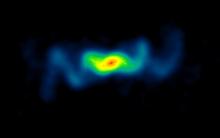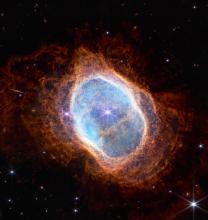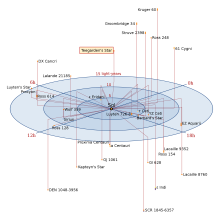Listen to today's episode of StarDate on the web the same day it airs in high-quality streaming audio without any extra ads or announcements. Choose a $8 one-month pass, or listen every day for a year for just $30.
You are here
16 Cygni
The Sun is larger and brighter than most other stars in the galaxy. In fact, only a few percent of the Milky Way’s stars are about the same size, temperature, and brightness as the Sun. And at this time of year, if you have a dark sky and a good star chart, you can see two of them for yourself.
The stars form a binary system known as 16 Cygni. The system is about 70 light-years away, in the constellation Cygnus, which is in the northeast in early evening. But the stars are so close to each other that their light blends together to form a single point -- one that’s just barely visible to the unaided eye.
If you aim a small telescope at 16 Cygni, though, you’ll see both stars. They’re almost identical to each other -- and to our Sun: about the same color, mass, and brightness. The fainter of the two stars even has a giant planet in orbit around it.
One big difference between the Sun and the stars of 16 Cygni is age. While the Sun is about four and a half billion years old, the stars of 16 Cygni are about seven billion years old. Scientists know this because the structure of a star changes as the star ages. Oscillations inside the star cause tiny changes in its light that reveal the structure of the star’s interior.
The stars of 16 Cygni show us what the Sun would look like if we could view it across many light-years of space -- and if it had a matching partner to keep it company on its long journey through the galaxy.
Script by Ken Croswell





